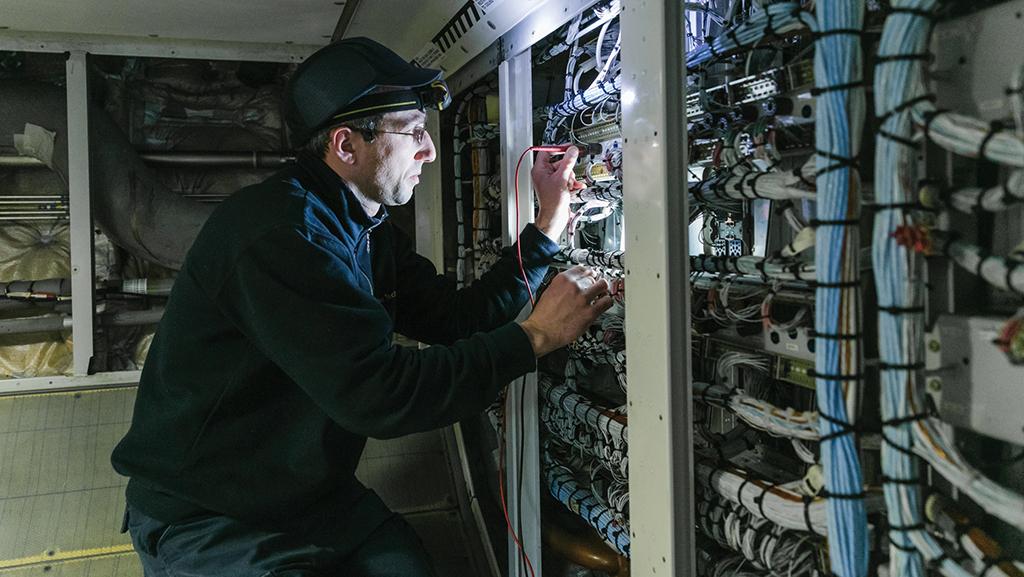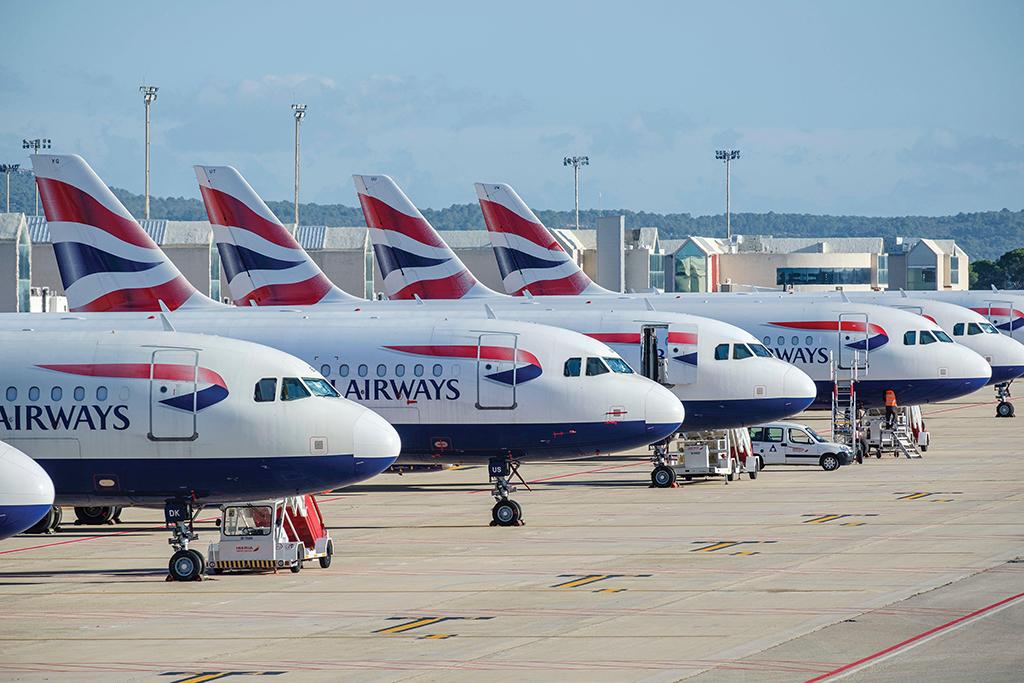
Shortages of wiring and computer chips have created bottlenecks at MRO providers.
Lessors were put in an unprecedented position during the onset of the COVID-19 pandemic and forced to find increasingly creative ways to support their airline customers. These included writing off overdue rents, agreeing to flight-hour-based lease payments and sometimes even taking stakes in airlines under debt-for-equity swaps.
They were also pushed into an unusual situation regarding maintenance oversight, as aircraft were returned early by airlines that could not afford to keep them, and customers that could take the aircraft proved hard to find.
“During the first half of the pandemic, there was practically zero remarketing. Airlines were shrinking fleets rather than building for the future,” confirms Felipe Campos, chief technical officer for Avolon. “Aircraft were being returned off lease, and lessors were forced to store our off-lease assets.”
Parking aircraft and engines for extended periods brings its own set of maintenance challenges to ensure that they can be returned to service in a timely manner when demand returns.
“

You tend to see lots of surface corrosion on items like power control units, flight control tracks and carriages, landing gears and internal engine parts like liners,” Campos notes. He adds that computers and other avionic components can face reboot issues after a prolonged period in storage.
Even absent such problems, reactivating stored aircraft can take time, as owners and operators clear a backlog of overrun checks, airworthiness directives and software updates that may have accumulated during time out of service.
“When returning aircraft to service from long-term storage it is critical to ensure that reactivation follows the then-current prescribed tasks of the OEM and adheres to the appropriate regulatory authority requirements for that aircraft,” says Oisin Murray, head of new aircraft programs for lessor CDB Aviation.
Brushing Up
The huge volume of aircraft put into storage during 2020-22 posed a significant challenge for specialist aftermarket companies, let alone the lessors that are more used to airlines shouldering the maintenance responsibility for their aircraft.
“We quickly had to become extremely diligent and knowledgeable with proper storage requirements or else face the expensive consequences of unscheduled and extended shop-visit costs,” Campos notes.
A few months after lockdowns began, Avolon set up a specific team to manage all on-ground aircraft.
“The team not only looked at better storage oversight but also completed exhaustive studies on the specs of our assets so we could complete some proactive work while in storage to ensure our assets could be at the top of the list when onward leasing opportunities arose,” Campos says.
Lessors also have had to handle more repossessions, as airlines either failed or rejected aircraft under court-approved restructurings. “This meant taking back an aircraft in an ‘as-is’ state rather than the aircraft being returned under the stringent return conditions as per the lease agreement,” Campos says.

“The pandemic led to more early terminations and repossessions, in which case lessors were being exposed to performing maintenance themselves,” agrees a senior executive at one of the world’s largest lessors.
However, the leasing executive adds that third-party contractors have been able to mitigate any difficulties that resulted. “Oversight was curtailed for a period early on with travel restrictions, but this was mostly overcome by finding proficient contractors in-country where inspections could be performed without the need for air travel. In short, it was more challenging initially, but solutions were found over time,” the executive says.
That said, the scramble to procure maintenance oversight services often has meant forming relationships with untested suppliers, especially when travel restrictions have prevented lessors from performing their own checks.
“The ability to provide effective oversight of lessee fleets was compromised during the pandemic primarily due to the restrictions on travel,” CDB Aviation’s Murray observes. “This resulted in the need to perform records audits remotely and, when able to perform in person, audits required the use of local contractors often unknown to us previously, who would have been unfamiliar with our requirements and processes.”
Such audits have been hampered further by a lack of personnel to assist with them at the many understaffed airlines that entered hibernation during the pandemic.
Staffing
The use of external contractors has meant that “CDB Aviation’s internal staffing levels during the pandemic did not change, despite the increase in workload,” Murray says.
While interviews with other lessors by Inside MRO also do not suggest an increase in their technical department headcounts, the last 12 months have been extremely busy for staff turnover and recruitment of senior talent.
In September, for example, Kym Morris joined Minsheng Financial Leasing as vice president of technical in its Dublin office; Scott McArthur joined Azorra Aviation as vice president of technical, responsible for the asset management of the company’s aircraft and powerplants, including managing maintenance and lease contracts; and Kayan Aviation Chief Technical Officer David Rushe left the company to join Aergo Aviation as senior vice president of mature aircraft and engines.
These followed several appointments during the summer, including at Abelo Aviation, which named Paul Dillon chief technical officer after hiring him from Nordic Aviation Capital, where he was head of engine management.
Singapore-based Avation hired Michael Dela Cruz as head of technical from ST Engineering in June, while in the U.S., Voyager Aviation appointed ex-GECAS leader Todd King as vice president of technical in July.
Overseeing Recovery
The main drivers of demand for leased aircraft have been the rapid recovery of passenger traffic in certain markets and delays in delivery of new aircraft from Airbus and Boeing.
“There has been a reduction in new deliveries over the pandemic, and this curtails airline growth, which in turn leads to more demand for interim lift with used assets,” confirms one leading lessor.
At Avolon, Campos notes that new deliveries have been affected by knock-on effects from the pandemic and the impact on the supply chain of sanctions on Russia following its invasion of Ukraine. Other factors are in play as well, though, he says.
“Even without these issues, they [airframers] are light-years from being able to meet their overambitious delivery targets,” Campos says. “All these factors are favorable for lessors if we can get our hands on the assets.”
All lessors interviewed agree that delivery delays have pushed more airlines to sign for lease extensions, although Murray notes that CDB Aviation has not changed its fleet strategy as a result, nor has this situation affected its technical oversight.
Supply chain problems have made it harder to source aircraft, “which could be a good thing for lease rates,” Campos notes. “But it is not so good for airlines in need of lift to capitalize on the demand for travel or to transition aircraft that need work.”
Elaborating on this point, another lessor cites bottlenecks at MRO providers struggling with disruptive labor and material shortages, such as for computer chips and wiring.
“It has had and continues to have a major impact, with most aircraft not maintaining schedule in MROs due to supply issues,” says the source. “This is likely to continue for some time . . . as the supply chain slowly repairs itself. Repair shop capacity has also been an issue, with certain suppliers having reduced their workforce during the pandemic, which created bottlenecks in the system.”
These bottlenecks mean some lease returns are being put off as airlines wring maximum utility out of aircraft only to be caught out by longer-than-anticipated wait times for end-of-lease checks and maintenance.
“The recent shortage of available aircraft has meant airlines want to operate these aircraft in revenue service right up to the point of return, which typically results in an overrun on the redelivery date,” says Campos. “Supply chain issues are also catching returning airlines off guard when components need to be replaced due to failure to meet the return conditions.”
Murray says that while airlines “have generally improved in their management of lease returns,” further improvement would be appreciated. “Better awareness among the airline personnel of the contractual return conditions and better planning around redelivery maintenance would benefit all parties during the lease-return process.”
Both Murray and Campos say the best airlines at handling lease returns are those with dedicated staff and processes to handle redeliveries.
Airline Relationships
Although the COVID-19 pandemic has led to aircraft repossessions in certain parts of the world, the overall level of reclaimed aircraft has been lower than initially expected, in part due to generous state support from some governments and in part due to forbearance from lessors, many of which agreed to rewrite rental contracts.
“We worked with our airline customers to balance all rental and reserve payments, where possible, to help them survive the crisis, making sure our valued customers would survive to continue to be our industry partners for years to come,” Campos says.
In some cases, this has meant agreeing to lower maintenance reserves, although lessors point out that this has not been a priority for airlines.
“While some airlines sought concessions and a restructure of their leases during the pandemic, the requests to lower maintenance reserve rates were less common,” Murray says. “This was mainly because while aircraft are grounded, the airlines’ obligation to pay maintenance reserves only applied for calendar maintenance events, such as airframe structural checks and landing gear overhaul. These typically are less than 25% of an airline’s maintenance reserve obligation. Consequently, there were limited concessions requested or granted around maintenance reserves.”
Another lessor agrees that “airlines were more focused on lease rent than maintenance reserves.” He adds: “Ultimately, it’s all cash flow, so some lessors may have opted to provide forbearance by way of the maintenance reserves, but the majority were rental concessions. Where a formal Chapter 11-type restructuring was involved, both rent and reserves typically came under pressure.”





